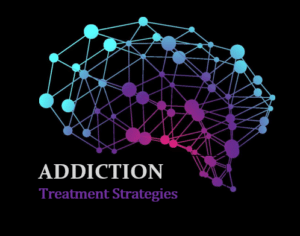Exercise: The Key to Brain Growth
Exercise: The Key to Brain Growth
It is common knowledge that exercise is beneficial to our physical health. Studies have shown decreases in the rates of cardiovascular disease, Type II diabetes, and obesity in those who exercise regularly. What is regularly? About 30 minutes at least 5 days a week is considered to be the most beneficial. Aerobic exercises, or ones that are physically more demanding, are also preferred over anaerobic exercises. You can get your heart pumping by running, swimming, cycling, rowing, playing sports (soccer, tennis, racquetball), yoga, dance, etc.
Not only is exercise is important to your physical health but it is very important to your mental health as well! Aerobic exercises can release endorphins, the body’s natural pain reliever, which temporarily alleviate pain, stress, and even feelings of depression. Over the long haul, exercise can raise a person’s threshold of stress, making a person less timid and better able to manage problems when they arise in the future. In addition, aerobic exercise can also improve memory and cognition for both short-term and long-term periods. But how does this happen?
When we perform aerobic exercises, a hormone called brain-derived neurotrophic factor (BDNF) aka “Miracle Grow for the brain” is created and released in the brain. BDNF stimulates changes in gene expression that can lead to neural growth and synaptic plasticity. On a cellular level, this means that there is increase in “axon growth, dendritic branching, synaptic assembly and neurotransmission” of neurons in the brain, especially the hippocampus (Hötting, 2016). The hippocampus is an area of the forebrain that is involved in the consolidation of memories from short-term to long-term, and this area of the brain is damaged with exposure to prolonged stress—hippocampal shrinkage is often found in patients with post-traumatic stress disorder (PTSD) as well as those with alcohol addictions (Logue, 2018; Mira, 2020).
Impaired memory and cognition (executive functioning, critical thinking, planning, organizing, impulse control) is a regular symptom of chronic alcohol and/or drug abuse in individuals. An addiction is defined by the National Institute on Drug Abuse (NIH) as a chronic relapsing disease where the structure and function of the brain has been altered. No matter the substance (caffeine, sugar, marijuana, alcohol, fentanyl, cocaine, etc.), it will alter the reward center of the brain: the nucleus acumbens (Scofield, 2016). Addictive substances rewire the brain and create neurological loops that fire when activated by stimuli associated with the substance use, including the substance itself, the events leading up to getting the substance, the normal environment one uses in, social crowd, stressors, etc.
One means of helping rewire the brain’s reward system in people who have addictions is to engage in frequent aerobic exercise. Exercise will help build another neurological loop that is stronger than the one associated with the addiction to help the person regain some control over their cravings as well as release natural feel-good hormones that assist in alleviating mood in the individual. Also, exercise will augment the rebuilding of synaptic connections between neurons through the production and release of BDNF in the brain and hippocampus.
If you would like to learn more about exercise and its important to those learning to maintain their addictions, please check out the below references, read the book Spark (by Ratey, MD), and/or see the ATS patient manual (Yellow page 25, Yellow page 26, Red page 13).

Photograph: Getty Images
References
Hötting, K., Schickert, N., Kaiser, J., Röder, B., & Schmidt-Kassow, M. (2016). The effects of acute physical exercise on memory, peripheral BDNF, and cortisol in young adults. Neural Plasticity, 2016, 1–12. https://doi.org/10.1155/2016/6860573
Logue, M. W., van Rooij, S., Dennis, E. L., Davis, S. L., Hayes, J. P., Stevens, J. S., Densmore, M., Haswell, C. C., Ipser, J., Koch, S., Korgaonkar, M., Lebois, L., Peverill, M., Baker, J. T., Boedhoe, P., Frijling, J. L., Gruber, S. A., Harpaz-Rotem, I., Jahanshad, N., Koopowitz, S., … Morey, R. A. (2018). Smaller Hippocampal Volume in Posttraumatic Stress Disorder: A Multisite ENIGMA-PGC Study: Subcortical Volumetry Results From Posttraumatic Stress Disorder Consortia. Biological psychiatry, 83(3), 244–253. https://doi.org/10.1016/j.biopsych.2017.09.006
Mira, R. G., Lira, M., Tapia-Rojas, C., Rebolledo, D. L., Quintanilla, R. A., & Cerpa, W. (2020). Effect of Alcohol on Hippocampal-Dependent Plasticity and Behavior: Role of Glutamatergic Synaptic Transmission. Frontiers in behavioral neuroscience, 13, 288. https://doi.org/10.3389/fnbeh.2019.00288
Scofield, M. D., Heinsbroek, J. A., Gipson, C. D., Kupchik, Y. M., Spencer, S., Smith, A. C., Roberts-Wolfe, D., & Kalivas, P. W. (2016). The Nucleus Accumbens: Mechanisms of Addiction across Drug Classes Reflect the Importance of Glutamate Homeostasis. Pharmacological reviews, 68(3), 816–871. https://doi.org/10.1124/pr.116.012484




Leave a Reply
Want to join the discussion?Feel free to contribute!